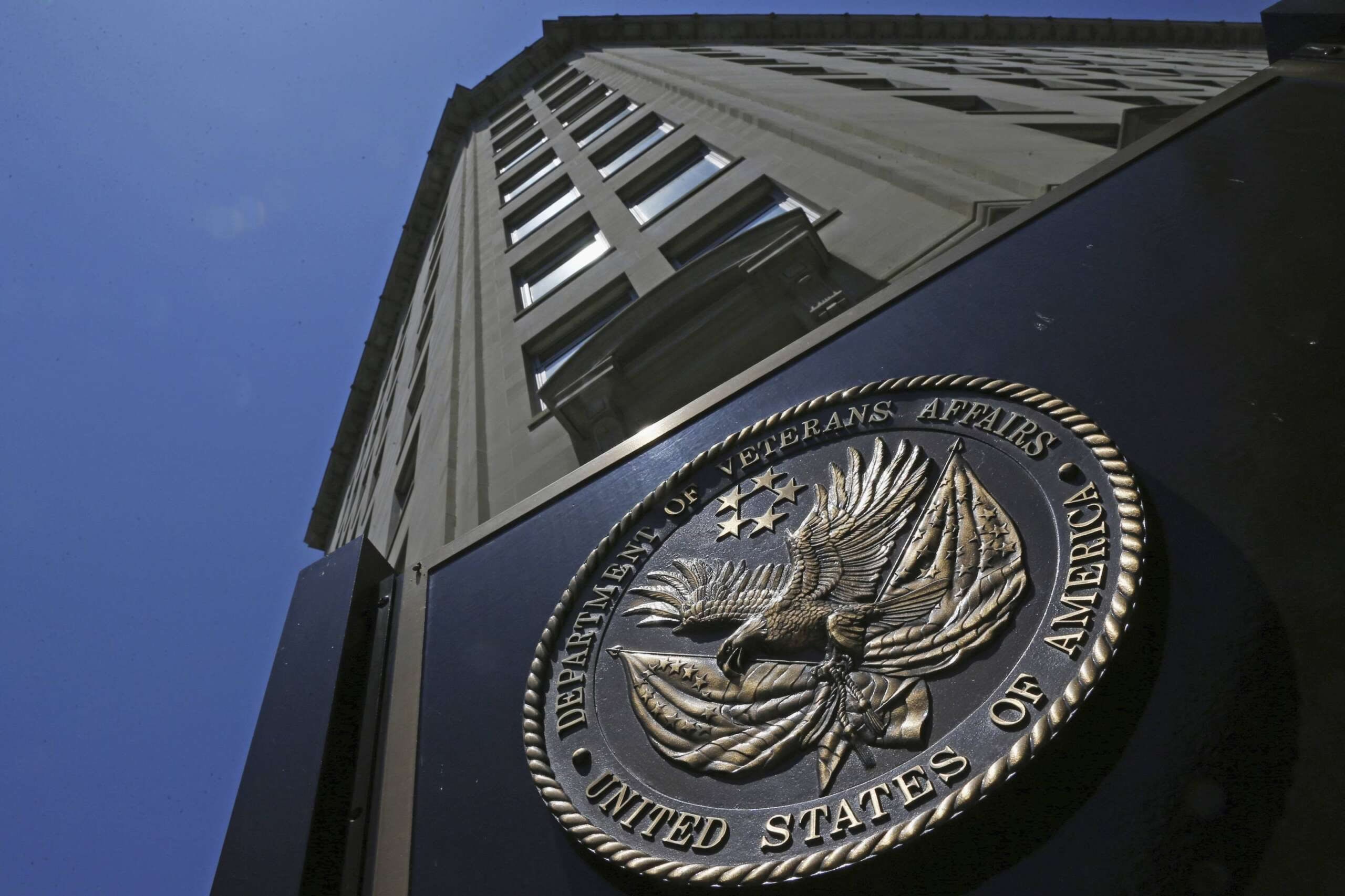The Department of Veterans Affairs says it’s on track to cut nearly 30,000 positions by the end of the fiscal year — a significantly smaller workforce cut than the department’s previous estimates.
VA Secretary Doug Collins said in March that VA’s goal was to cut 15% of its workforce, which would mean eliminating about 72,000 total positions. But the VA announced Monday that it’s no longer considering department-wide layoffs through a reduction-in-force.
The VA says it’s shed about 17,000 positions between January and June. Those cuts happened through attrition under a governmentwide hiring freeze, the deferred resignation program and retirements.
The VA had about 484,000 employees on Jan. 1, 2025, and 467,000 employees as of June 1, 2025 — a reduction of nearly 17,000 positions.
Between now and Sept. 30, the department expects nearly another 12,000 VA employees will leave through “normal attrition,” voluntary early retirement offers and deferred resignation offers — “eliminating the need for a large-scale reduction-in-force.”
“VA has multiple safeguards in place to ensure these staff reductions do not impact veteran care or benefits,” the department wrote in a press release on Monday.
The VA says mission-critical positions have been exempt from the deferred resignation and early retirement offers. More than 350,000 VA positions are exempt from a governmentwide federal hiring freeze that’s in place until July 15.
House VA Committee Chairman Mike Bost (R-Ill.) said in a statement that, “from the very beginning I have long said that I had full confidence in Secretary Collins and the Trump administration to make the right decision surrounding any plans to reduce VA’s workforce.”
“With today’s announcement from Secretary Collins, those who have spent the last six months yelling from the sidelines should have held off their criticism of potential plans until a plan was actually in place,” Bost wrote.
Senate VA Committee Ranking Member Richard Blumenthal (D-Conn.), however, said the planned departure of nearly 30,000 employees “makes clear VA is bleeding employees across the board at an unsustainable rate because of the toxic work environment created by this Administration and DOGE’s slash and trash policies.”
“This is not ‘natural’ attrition, it is not strategic, and it will inevitably impact veterans’ care and benefits — no matter what blanket assurances the VA Secretary hides behind. Make no mistake, this is still a reduction in force — except VA has been able to do it without accountability and transparency to veterans and Congress,” Blumenthal said.
Shrinking the VA’s workforce by 30,000 positions is still a significant downsizing, but far less than the more than 80,000 positions the department considered eliminating earlier this year.
In March, a leaked memo from VA’s chief of staff said the department would return to 2019 staffing levels — walking back a VA hiring surge that happened under the Biden administration to prepare for the implementation of the PACT Act. The 2022 legislation expanded eligibility for VA health care and benefits for veterans exposed to toxic substances during their military service.
The VA, as a result of the PACT Act, is providing health care and benefits to many more veterans.
House VA Committee Ranking Member Mark Takano (D-Calif.) said shrinking the VA’s workforce by about 30,000 positions would still be the largest staff cut in the department’s history.
“The Secretary knows that VA’s workforce was expanded to meet the needs of veterans covered by the largest healthcare and benefit expansion in VA history, the PACT Act,” Takano said. “He knows this, and he remains steadfast in taking steps that will dismantle its successes.”
VA officials considered larger workforce cuts, internal documents show
It’s not clear yet what the VA’s announcement will mean for its broader reorganization plans. But internal VA documents obtained by Federal News Network show senior department officials, up until recently, were weighing the pros and cons of more significant workforce cuts.
“Reorganization Implementation Cell” documents briefly available on the VA’s internal SharePoint site last month show that the VA, between April and June, still considered more aggressive staffing cuts.
One document, dated April 18, shows senior VA officials considered shrinking the number of regional Veterans Integrated Service Networks (VISNs) from 18 to 10. In these preliminary planning documents, VA officials planned to consolidate as many as three VISNs into one.
To meet the department-wide goal of 15% workforce cuts, the Veterans Health Administration’s Central Office needed to cut 3,000 positions from its 20,000-employee workforce. But more than 3,000 VHA Central Office employees have already been cleared to quit their jobs and go on paid administrative leave through Sept. 30 under the deferred resignation program.
Senior VA officials, however, considered more aggressive cuts to administrative positions in order to avoid cutting frontline, veteran-facing positions.
According to the internal documents, VA senior officials said in April that a 15% workforce cut from VHA’s Central Office and VISNs meant the department would still have to cut 55,000 positions from the “field” — medical centers and outpatient facilities — in order to meet departmentwide goals.
“We are 23k short, even if we wipe out central office and VISNs; there is 23k positions that need to be cut,” VA officials wrote in one briefing memo.
According to the internal documents, a senior VA official said he “does not know how it doesn’t affect veterans care,” if the VA followed through with cutting 55,000 field positions.
According to these planning documents, VA officials evaluated the impact of possibly cutting VHA Central Office and VISN staff by 30% and 50%.
“They are evaluating different scenarios of cutting VHACO/VISN staff,” a VA official told Federal News Network.
In a readout of an April 22 meeting, senior VA officials raised several key questions as part of RIF and reorganization talks — including how the VA’s workload “would be absorbed or redistributed” after workforce cuts, and whether the department planned to retrain or reassign RIF’d employees into other roles.
“Are there any mission-critical positions being eliminated that may require later rehiring under a different series or location?” senior VA officials asked.
VA officials also asked what safeguards the department had in place “to prevent disruptions to veterans’ health care, claims processing or benefits delivery” as part of these RIF talks, and asked which veteran-facing services or functions “must be preserved, expanded, or consolidated.”
VA Press Secretary Peter Kasperowicz said in a statement on Monday that those internal documents are “outdated,” and don’t “reflect VA’s plans.”
Last month, the VA paid the Office of Personnel Management more than $726,000 to help oversee its reduction-in-force and reorganization plans. According to an interagency agreement, obtained by Federal News Network, VA said it was seeking OPM’s assistance because the VA “has never undertaken such a large restructuring, and does not have the capabilities, expertise or the internal resources to fulfill the requirement.”
If you would like to contact this reporter about recent changes in the federal government, please email and [email protected]. He can also be reached on Signal at jheckman.29
Copyright © 2025 Federal News Network. All rights reserved. This website is not intended for users located within the European Economic Area.
[ad_2]
Source link


Leave a Reply